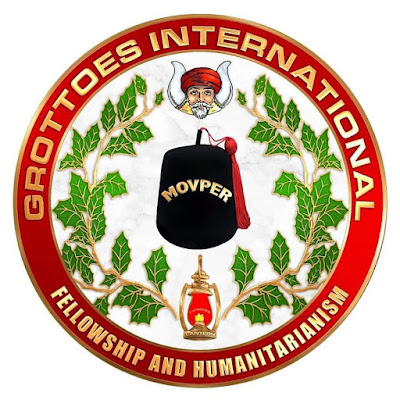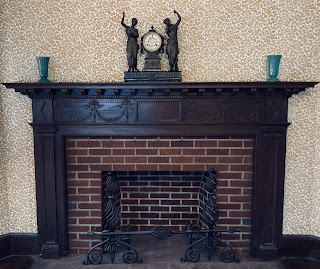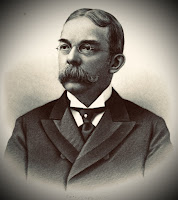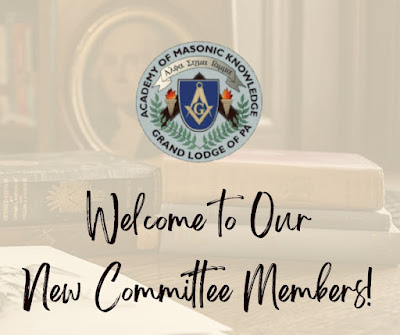 |
| The group portrait at the conclusion of a meeting seems to be a common tradition in Masonic Hall. |
Wow! What a day! When I stepped outside this morning to walk to Masonic Hall, I could tell it was going to be a great summer Saturday. Blue skies, sunshine, gentle breeze, seventy degrees, quiet streets & open sidewalks—even the pervasive threat of crazy violence that demoralizes the once irrepressible city seemed to take the day off. You see, today was the Allied Masonic Degrees Downstate New York Ingathering.
Downstate can mean a lot of things. New York is a big state, so referring to downstate can indicate New York City, Long Island, and the Hudson Valley. For me personally, everything north of 72nd Street is upstate, so these designations are variable. Anyway, several local councils of Allied Masonic Degrees collaborated on the labor at hand: a daylong extravaganza of conferring degrees and celebrating Masonic philosophy.
 |
| Jose Marti 512 charter. |
I don’t think I’ve received the Architect Degree actively before. We receive the degrees in name upon being inducted into the AMD, but in my twenty-one years in the order, this may have been the first time I’ve had that degree conferred on me. (Speaking of twenty-one years, I suspect there’s a good chance I was the senior-most AMD member in the room. An unsettling notion.) The degree itself is derivative of the Craft degrees in that it concerns Solomon, GMHA, and the Temple. Historians believe this was one in a suite of three degrees, with Grand Architect and Superintendent, comprising a rite that now is lost to time.
I should back up. If you’re not familiar with the AMD, it is an invitational order, open to Royal Arch Masons. It cobbles together about a dozen degrees that once upon a time were side degrees that a Mason might receive in lodge. You pay a fee, you receive a degree. It’s not as crass as that to be fair. The truth is the degrees we receive in tidily organized Royal Arch chapters and other groups had been worked in Craft lodges before the advent of those chapters, commanderies, et al. It’s just that a number of degrees did not make the transition from lodge side degrees to extra curricular “high degrees,” and they were in a kind of limbo as time passed and other degrees became independent sovereign bodies (e.g., Mark, Royal Arch, Templar). So, in the 1890s, English Masons united these orphaned degrees, making them the Allied Masonic Degrees. The myriad details of it all are incomprehensible unless you make a deep study of them, something I haven’t done in many years.
After the Architect Degree, we had lunch; after that, it was time for a panel discussion with Oscar, Praveen, and Matt.
Bro. Mike of Half Moon Council was out of town on Royal Arch Grand Chapter business, but he had suggested “Why AMD?” as a thematic question for the panel. The trio tendered remarks that traced the history of the AMD and its degrees up to the present day; that described Masonic Week (many are unacquainted); and the differences in attitude toward, and the covert nature of, the order. V. Bro. Praveen said AMD maintains a “sub rosa” character in New York—and I hope this edition of The Magpie Mason doesn’t blow its cover! There was much understandable curiosity about the AMD’s origins and development. RV Oscar provided specifics on the evolution of certain rituals to make clear the utter bizarreness of the AMD situation.
 |
| We met inside the Doric Room on six. |
I think most Freemasons in the United States are unaware of, or haven’t even given a thought to, the history of Masonic rituals. As I explained in this space last month about the 1658 Rhode Island myth, there are Masons who consider themselves researchers but actually believe the three Craft degrees they know today have existed and gone unchanged since time immemorial. There are Masons who have no idea that the rituals of the lodge differ from state to state. What we know in New York varies noticeably from what they do in New Jersey, and the Pennsylvanians work rituals that are significantly different from both, for example. So, to attempt to explain how the rituals inherited by AMD might have come into existence would require a post-graduate level inquiry into both history and anthropology. I don’t think there’s even been a book that satisfactorily tells the story—or if there was, it’s been long out of print.
 |
| Our panel speakers: Oscar, Praveen, and Matt. |
To illustrate, Oscar explained how the AMD was exported from England to Maine, but that doesn’t mean all the rituals were English in origin. Our Royal Ark Mariner Degree actually is Scottish, he said. When examining English, Scottish, French, Dutch, etc. rituals, one finds “the wild, wild west of Freemasonry,” he added. “People were doing all kinds of things.”
“They’re still finding rituals,” he continued. “If you open every door, you’ll be opening doors for the rest of your life.”
We were getting into the mid afternoon, so the time came to open a lodge of St. Lawrence the Martyr and to confer the degree. For some of the historical or legendary, depending on your point of view, basis of the story, click here. It is the introductory degree in English AMD, but we Americans don’t have such a structure. (We did have three initiates for the day though.) Nevertheless it is an instructive and memorable degree, even if its various signs and gestures slip your mind.
 |
| Can it be coincidence that St. Lawrence the Martyr Degree regalia bears the New York City colors of blue, white, and orange? I think not! |
After the degree, those who have yet to preside over an AMD council were asked to step outside while the rest of us opened a Board of Installed Masters to confer the Installed Worthy Master of St. Lawrence the Martyr Degree.
The ritualists in all three of the degrees today performed with skill and confidence. A pleasure to watch.
The quitting hour was starting to draw near. This Ingathering featured no research papers or other formal readings, and I’m not accustomed to that, but Bro. Javier capped off the day with his original and heartfelt discursion into the esotericism of space, dimension, shape, direction, and the like. Neither reading from a text nor referring to notes, which I’m also not used to, he weaved personal speculations into, if I understood correctly, an inquiry into the nature of the Masonic physical world. It’s not at all impossible that some of it soared over my head, but it was an apt conclusion to the memorable event. But we weren’t finished yet!
 |
| I never know what to do with the parchments, but there’s no denying they convey warm memories of great occasions and terrific people for many years. |
There were presentations, including official Grand Council parchments to all of us certifying our advancement in the aforementioned degrees, and also—of course!—lapel pins. I’ve never even seen an Architect Degree pin before. I believe I’ll wear it to lodge to see if it prompts any questions. (So much for sub rosa!)








































